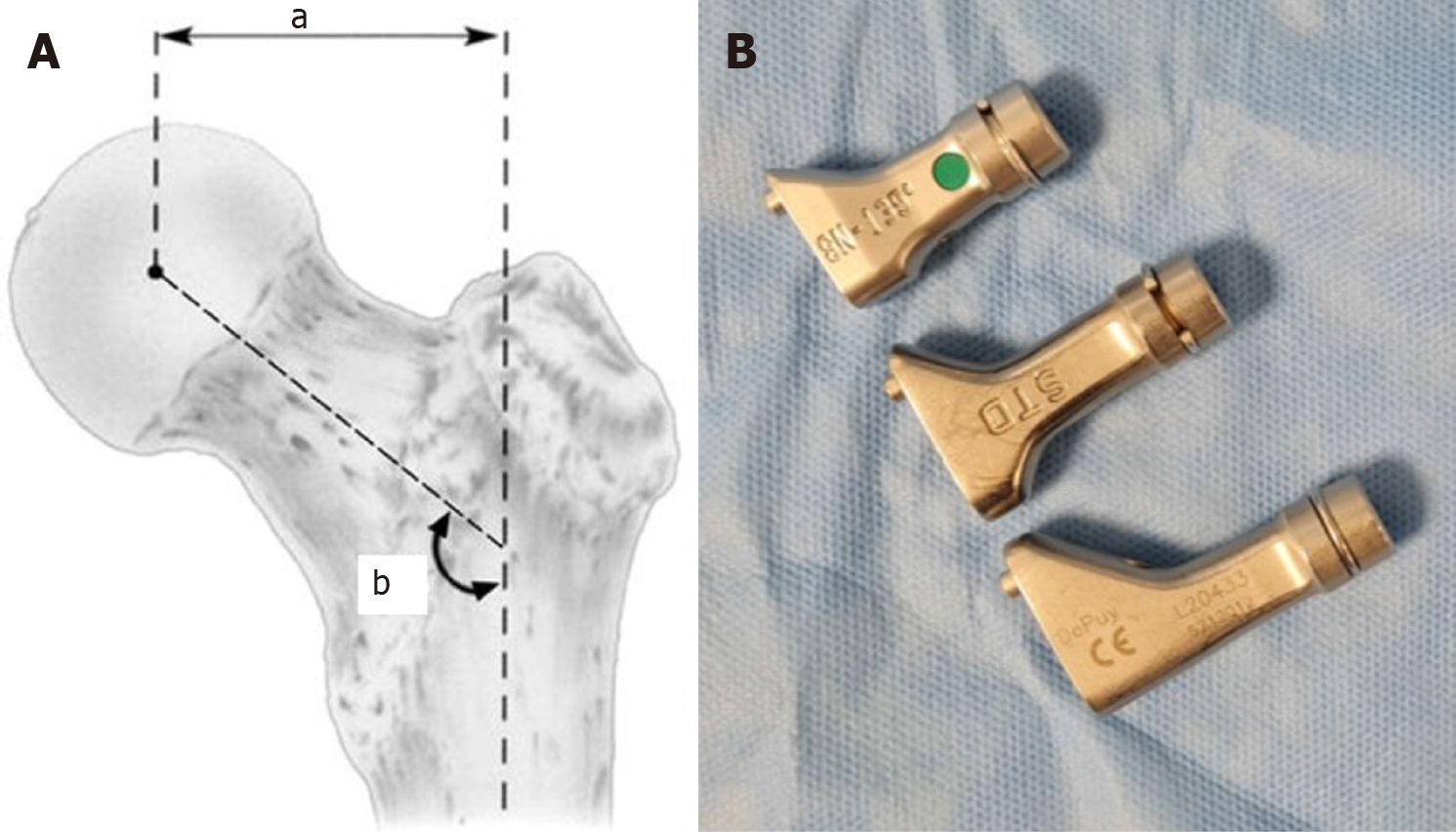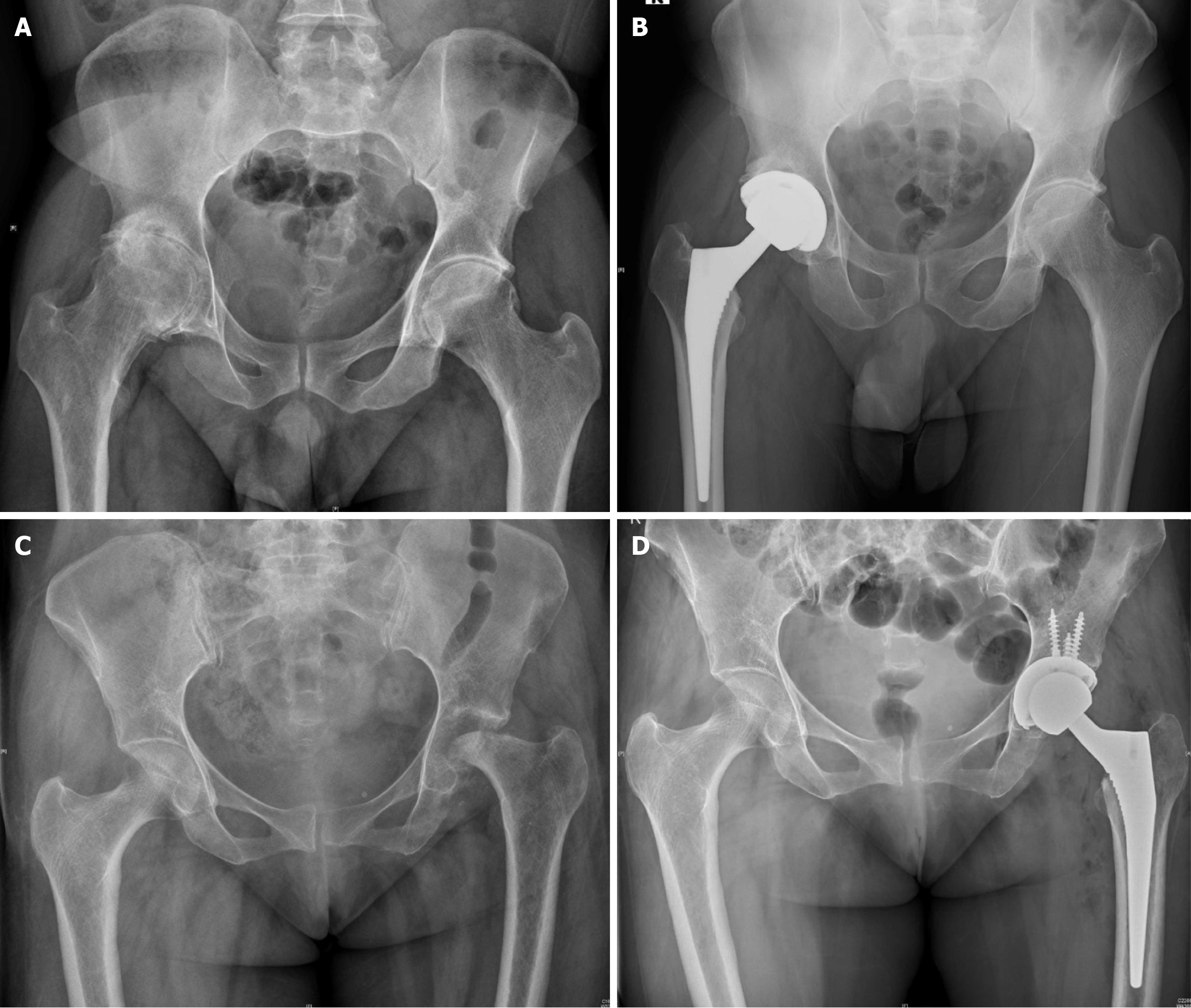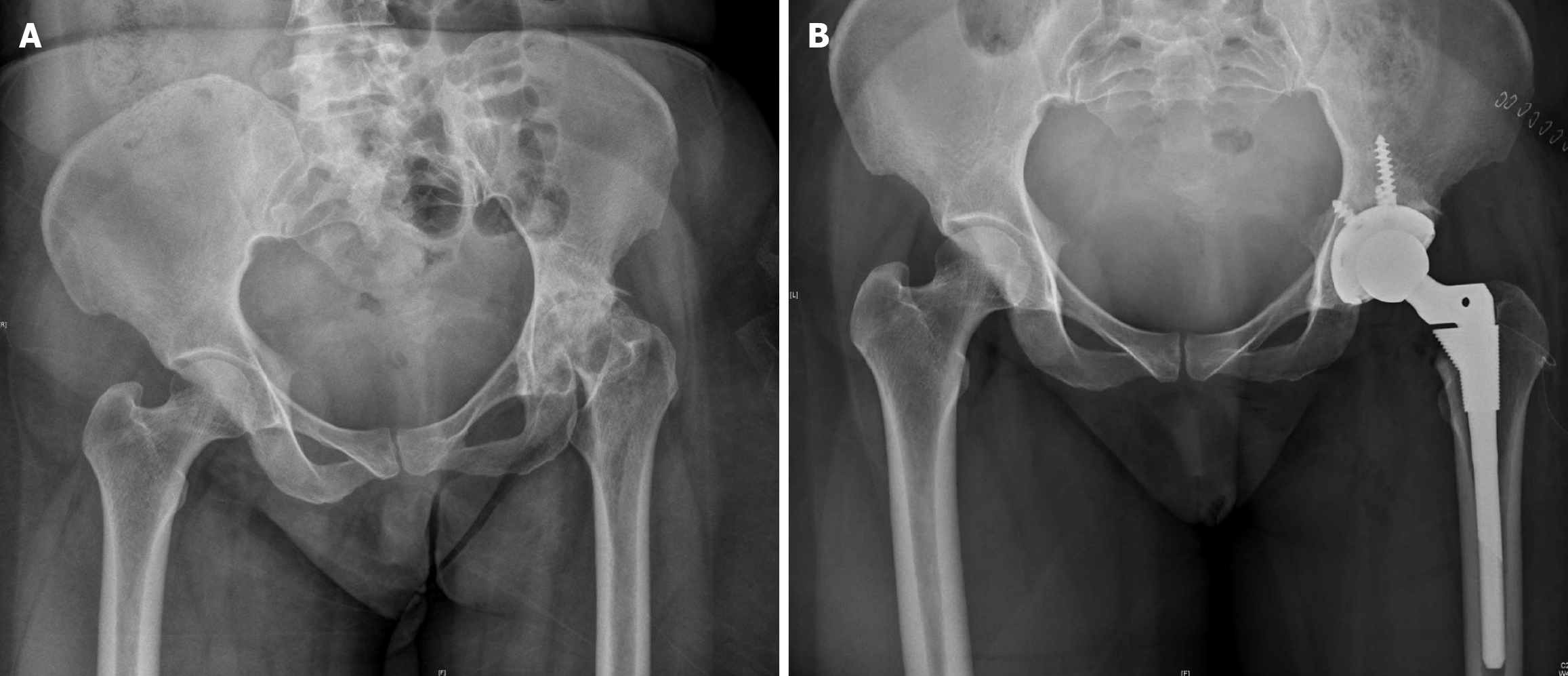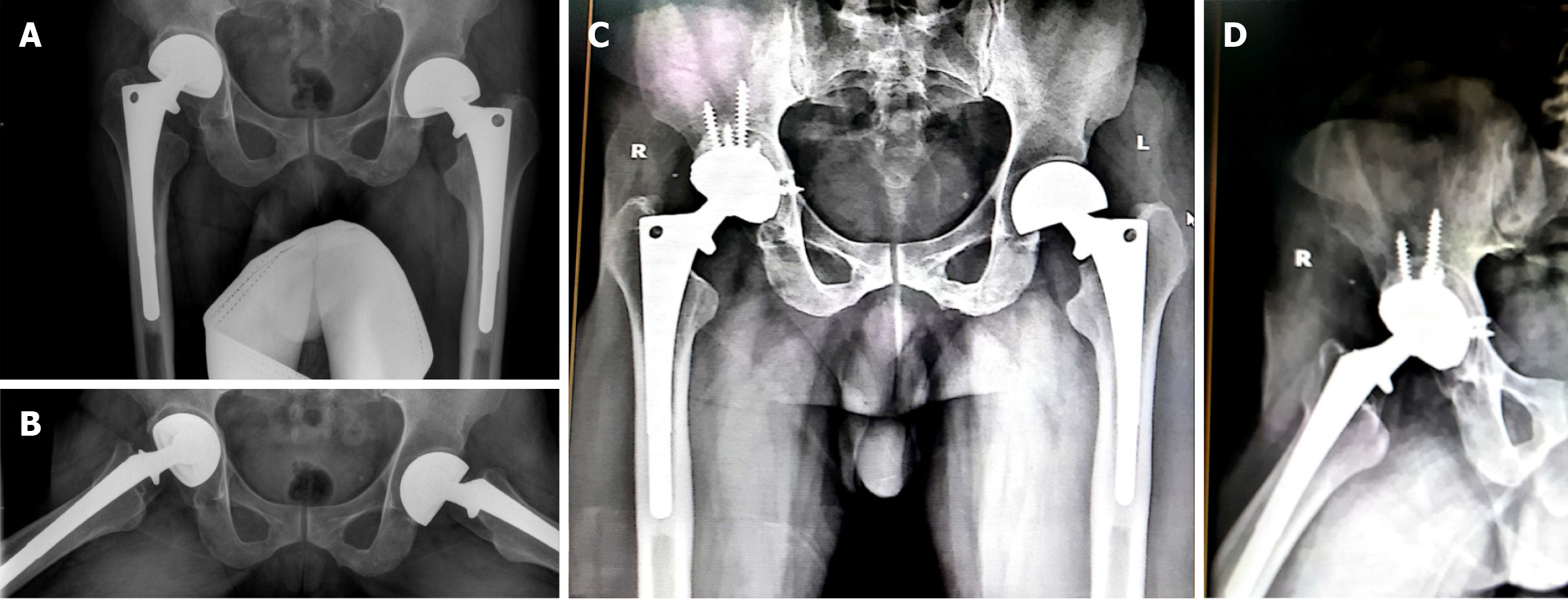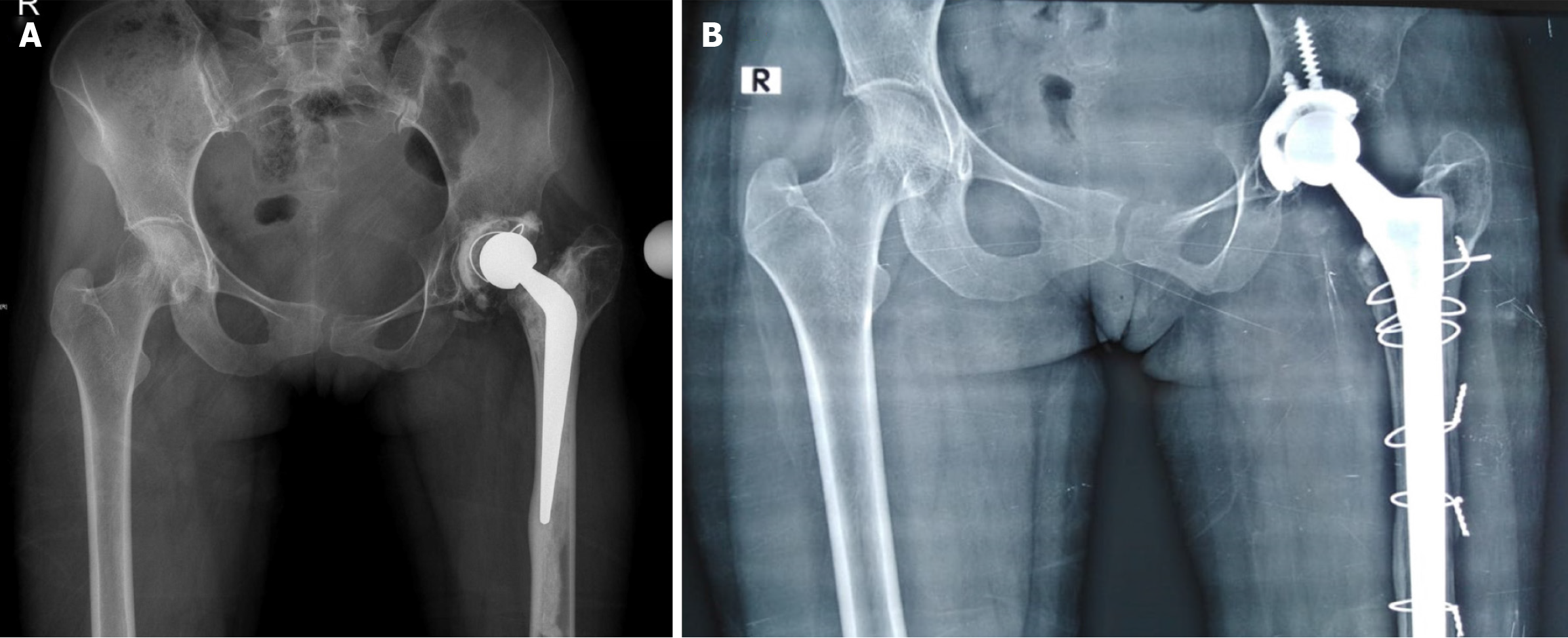Copyright
©The Author(s) 2024.
World J Orthop. Aug 18, 2024; 15(8): 696-703
Published online Aug 18, 2024. doi: 10.5312/wjo.v15.i8.696
Published online Aug 18, 2024. doi: 10.5312/wjo.v15.i8.696
Figure 1 X-ray both hips anteroposterior for preoperative planning.
A: Offset assessment. a: Acetabular offset; b: Femoral offset/ horizontal offset; a + b: Combined offset; c: Global offset; B: Limb length discrepancy measurement-inter-teardrop line, line–the center of lesser trochanter–the difference between 2 lengths a1, a2; b: Denotes the vertical offset.
Figure 2 Offset-horizontal needs careful assessment.
A: Horizontal offset represented by a; B: Neck trial options available including short neck, standard offset, and high offset-for Corail–Depuy, Johnson and Johnson, United States.
Figure 3 Templating for total hip arthroplasty requires preoperative and intraoperative assessment.
A: Preoperative templating to ascertain acetabular size and center of rotation; B: Femur templating provides optimal size and horizontal offset; C: Intra-operative templating with trial reduction provides information regarding offset correction. Trial reduction with offset options available would prevent under-correction or increase in offset.
Figure 4 Horizontal offset needs careful assessment.
A: A 51-year-old lady with a painful right hip, normal left hip shows a short neck and reduced horizontal offset; B: Total hip arthroplasty done with reduced neck length–short neck to match the normal offset -left hip. Horizontal and vertical offset restored.
Figure 5 Increased horizontal offset needs to be identified preoperatively.
A: Preoperative right hip arthritis with neck length matching high offset option; B: Both pre-operative and intraoperative templating are required to restore offset. High offset total hip arthroplasty establishes horizontal and vertical offset; C: Preoperative left hip arthritis with neck shaft angle 120 degrees and neck length matching high offset option; D: High offset total hip arthroplasty establishes both horizontal and vertical offset.
Figure 6 Horizontal and vertical offset need restoration.
A: A 41-year-old lady with left hip childhood arthritis sequelae; B: Total hip arthroplasty left hip with appropriate soft tissue release and modular stem achieved both horizontal and vertical offset restoration.
Figure 7 Restoration of horizontal offset and optimal abductor function.
A: Fracture neck of femur planned for total hip arthroplasty; B: Templating on the normal left hip shows a high offset requirement; C: High offset stem implanted with horizontal and vertical offset restoration and good functional outcome.
Figure 8 Hip center and horizontal center restoration.
A and B: 18-year post-operative bipolar arthroplasty with right hip pain due to acetabular erosion. Proximal migration, shortening, and loss of horizontal offset; C and D: 2-year follow-up of right hip conservative revision –acetabular component implantation with impaction bone grafting. Horizontal and vertical offsets were restored with a good functional outcome.
Figure 9 Inadequate vertical and horizontal offset.
A: A 29-year-old lady six years post total hip arthroplasty with pain and limp due to inadequate horizontal and vertical offset restoration; B: 1-year post-revision total hip arthroplasty with horizontal and vertical offset restoration.
Figure 10 Failure to restore vertical and horizontal offset resulted in dislocation.
A and B: Acetabular reconstruction and total hip arthroplasty with failure to establish horizontal and vertical offset resulted in dislocation 3 months postop; C and D: Revision total hip arthroplasty with femoral shortening, soft tissue release and modular components achieved horizontal and vertical offset restoration with good radiological and functional outcome at 4-year follow-up.
- Citation: Oommen AT. Offset restoration in total hip arthroplasty: Important: A current review. World J Orthop 2024; 15(8): 696-703
- URL: https://www.wjgnet.com/2218-5836/full/v15/i8/696.htm
- DOI: https://dx.doi.org/10.5312/wjo.v15.i8.696














